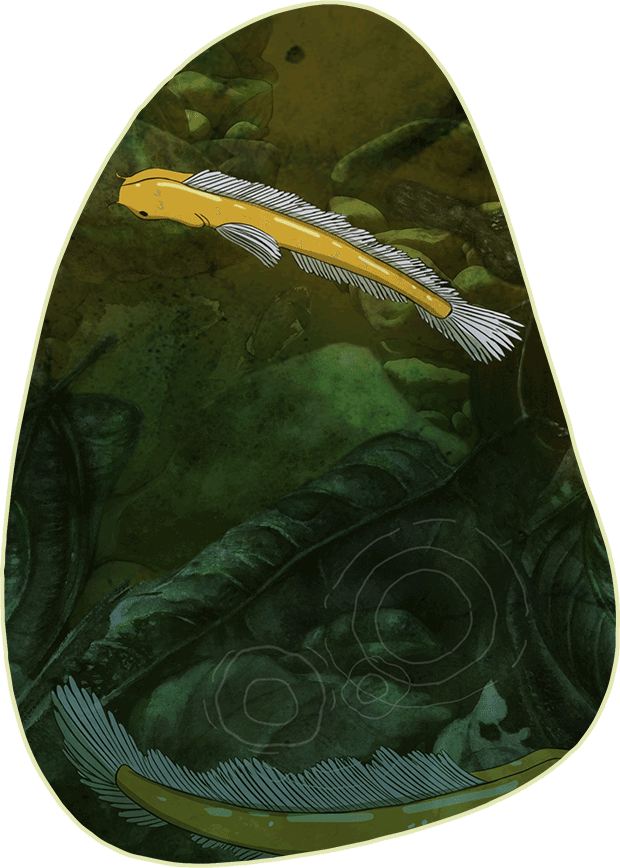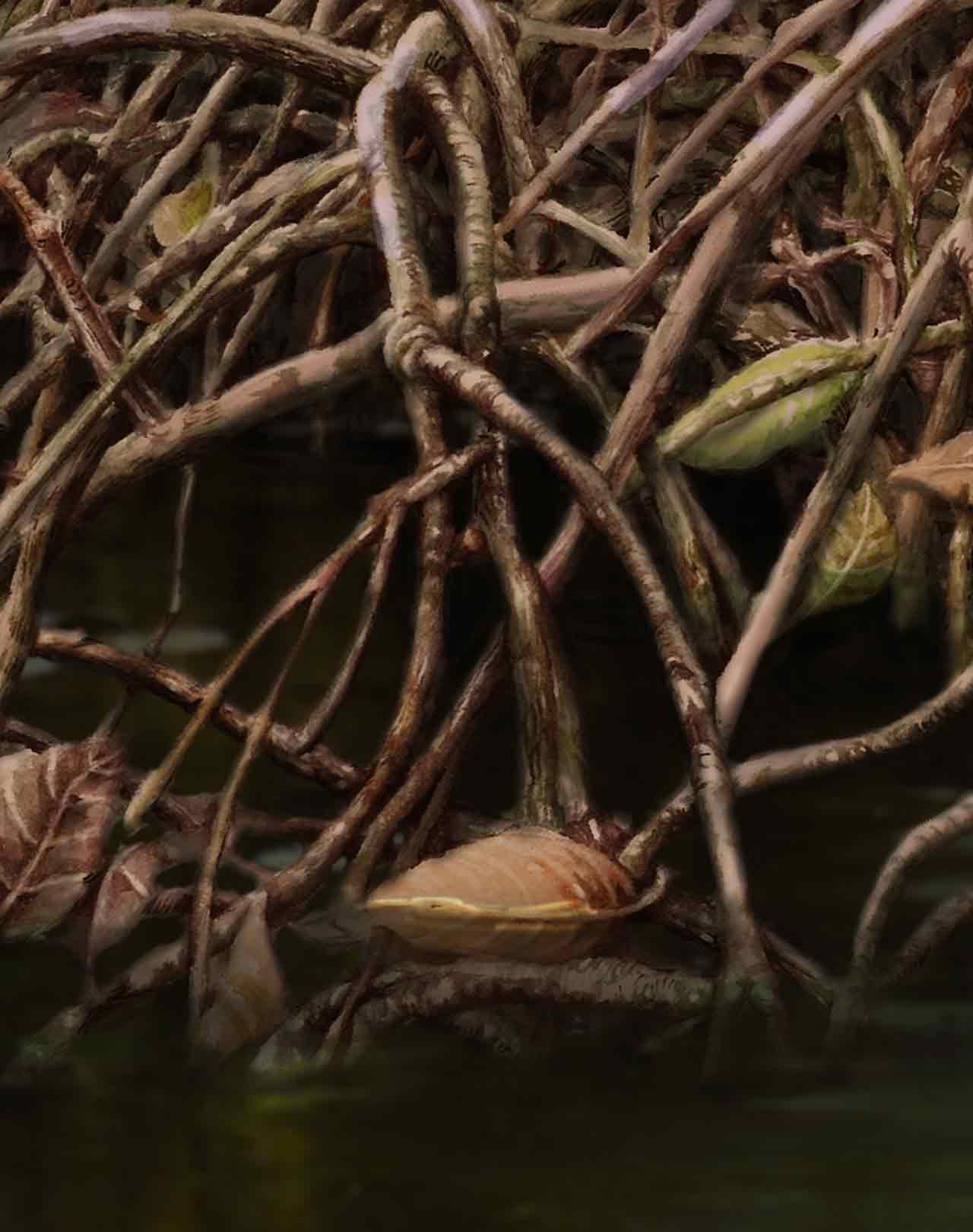
Forested Wetlands & Myristica
Swamps
A swamp is an area of land that is permanently filled with water. Myristica swamps are named after the Magnificent Nutmeg tree (Myristica magnifica), which dominates the habitat. They are relatives of ‘True nutmeg’ (Myristica fragrans)—the nutmeg spice we use in our cooking—which is native to the Indonesian Spice Islands.
Across the world, there are two main kinds:
-
Saltwater swamps
which form on tropical coastlines
-
Freshwater swamps
which form inland, around lakes and streams
Which category do the Myristica swamps fall under?
Bravo! Try again! Myristica swamps are freshwater swamps found exclusively in the Western Ghats—in the Uttara Kannada district of Karnataka and southern parts of Kerala, with some small patches recently discovered in Maharashtra and Goa. It is believed that they once formed a network through the primaeval forests of the Western Ghats. Since then, much of the area has been converted for agriculture or irrigation projects, and the remaining swamp land exists in smaller patches.
How old are Myristica Swamps?
A Paleobotanical Puzzle
Myristicaceae are often called relict species, or ‘living fossils’. Taxonomists believe this could be one of the oldest flowering plants families still in existence!
Scientists often examine DNA sequences to estimate the age of evolutionary events in a process called molecular dating. Such technology suggests that the evolution of Myristicaceae species is fairly recent—only 21 mya. Yet the distribution of members of this family globally tells a different story… Today, the roughly 500 Myristicaceae species are found on all ex-Gondwana landmasses that currently have tropical forests (South America, Africa, Madagascar, India, Southeast Asia). Could this mean that these species evolved before Gondwanaland broke up into present-day continents?
Flowering plants probably first appeared in the fossil record about 150 mya—during the age of dinosaurs—coinciding with the breakup of Gondwanaland into separate continents. By the time the dinosaurs vanished 65 mya, at the end of the Cretaceous period, tropical forests were widespread across the globe. These drifting continents, including the Indian landmass, therefore would have carried ancestors of today’s flowering plant families.
Significantly, despite great geographical distances separating Myristicaceae members, there are still striking similarities between species. Wherever they occur, they are characterised by their evergreen nature, beetle pollination, and fleshy fruit with a large seed enveloped in a brightly coloured aril (seed coat). This aril makes it attractive to a number of large-beaked ancient birds around the globe, like toucans in tropical South America, and hornbills in Africa and Asia.
Research on the age and origin of Myristicacea species is still inconclusive. Time and effort hold the keys to all the pieces of this fascinating forest puzzle.
Myristicaceae around the world
-
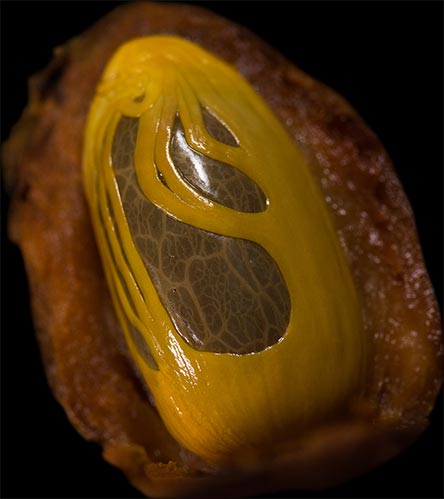
Myristica magnifica
(India) -
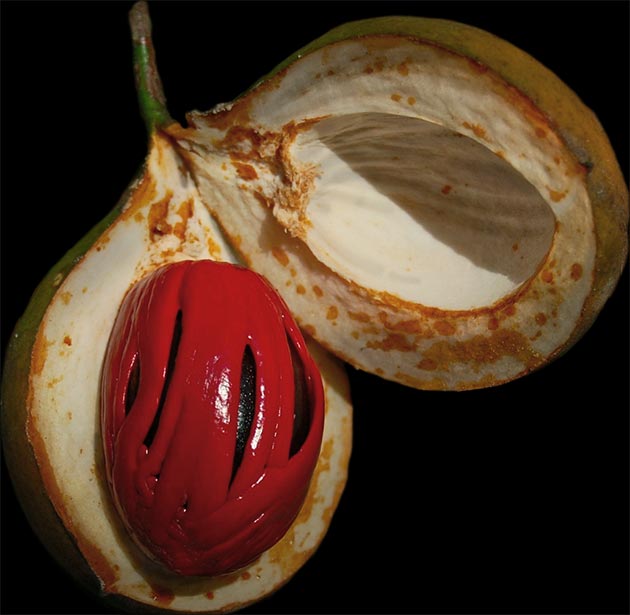
Myristica fragrans
(Indonesia) -
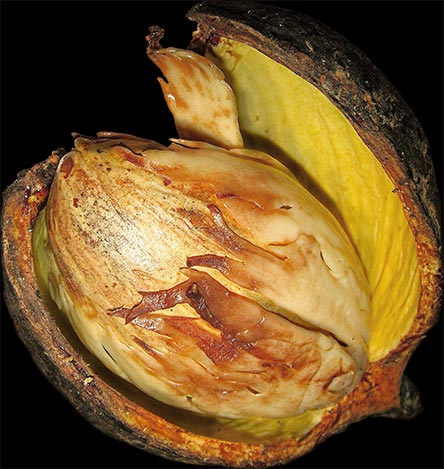
Cephalosphaera usambarensis
(Kenya & Tanzania) -
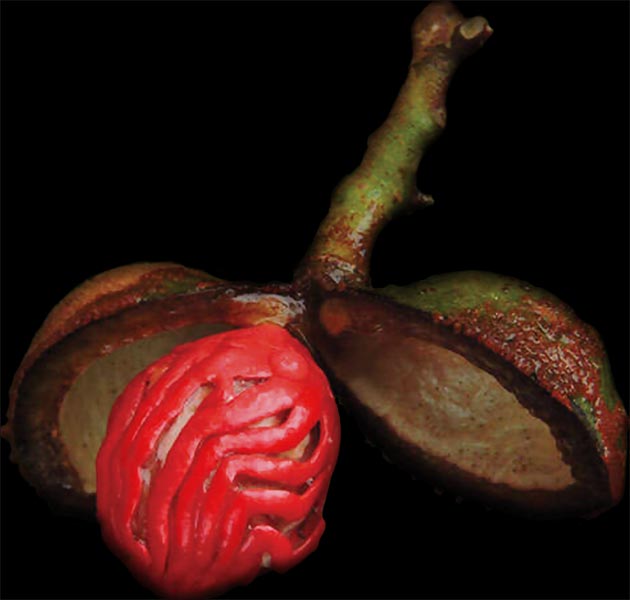
Virola sebifera
(tropical Middle & South America)
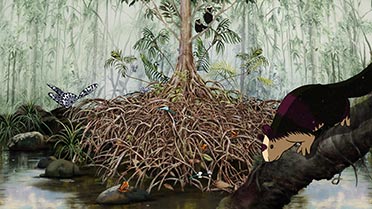 Back to top
Back to top
